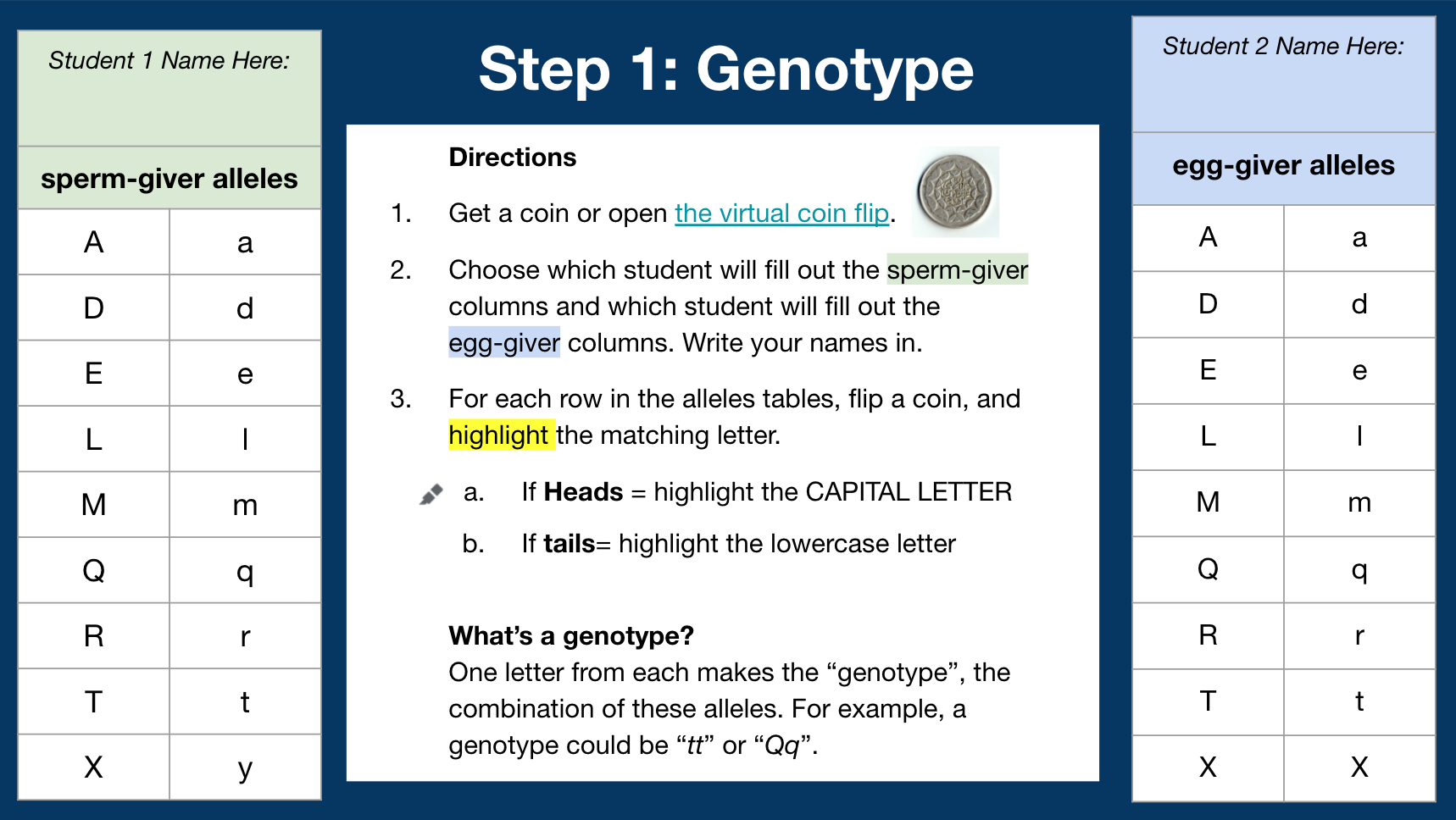Reebops Nursery (gender-inclusive independent assortment)
Adapted to be more inclusive from slides created by Laura Funk (staff profile page) by modifying “mom” to egg-giver and “dad” to sperm-giver, and adding UDL supports for students with cognitive differences.
Instructional note: I find it best to give these to students without explanation, so that they must derive what the components of the Reebops model are. Also, HS students are unusually protective over their Reebops. In-person, I put their completed models into plastic slips with their “birth certificate” ie. worksheet.
See steps below and the questions for the assessment at the end.
NGSS Works towards HS-LS3-1. Follow up with meiosis and HS-LS3-2.
Step 1: Flip a coin and highlight the capital or lowercase letter for that row.
Step 2: Combine the results from Step 1 to create a genotype (two letters).
Step 3: Use the third slide to decode the phenotype.
Step 4: Build the reebop based on the phenotype.
Assessment: Answer the questions in the Google Form.
0. Attach completed Reebops Nursery from your Drive.
1. Name your Reebop
2. What do you think each letter represents in the model?
3. What do you think combining the letters represents in the model?
4. All models are wrong. Some models are useful. What are some things missing from this model? List as many as you can think of.
5. Gametes (egg & sperm cells) contain 1 pair of chromosomes (n = haploid), the other body cells contain 2 pairs of chromosomes (2n=diploid). Is your baby reebop haploid or diploid?







